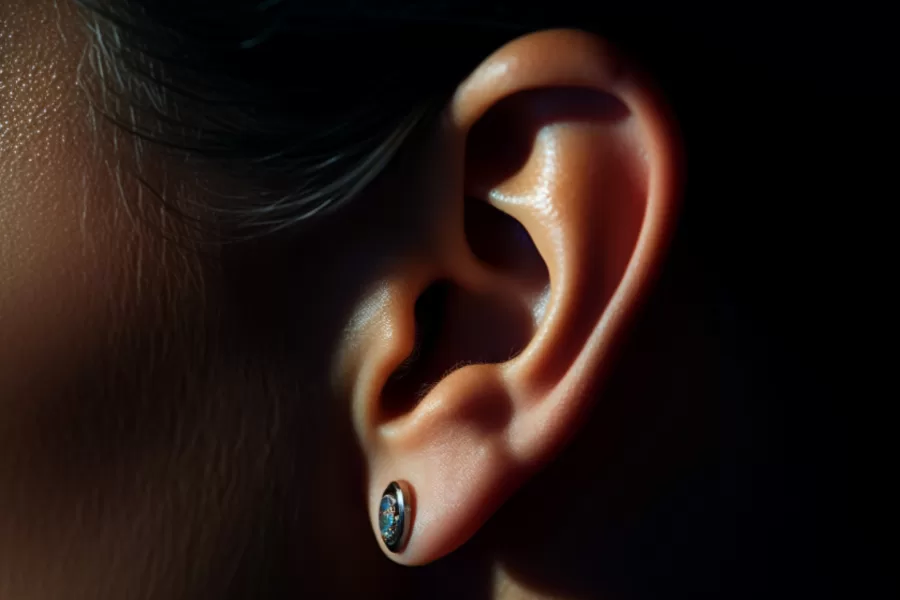When ears hurt and there is swelling or itching, it could be a sign of Ear Infections. Children fall for them most often but adults can suffer from one as well. One can easily catch it if they love swimming or have flu. That much is common knowledge.
But there is much more to know. In this article, we break down everything about ear infections, so that you can avert, recognize, and fight them.
Ear Anatomy
Everyone knows that we need ears to hear but they also conduct the function of balance. Each part of an ear does its individual work to give us information about the outer world and our location and position in it.
Outer ear
The outer ear is a visible ear part. It is what we pierce to wear earrings and other jewelry, or otherwise modify. The outer ear is also a part that Vincent van Gogh cut a fragment off! It is also called auricle or pinna.
The outer ear collects the sound waves and drives them into the ear canal. Also, here are located glands that produce earwax—a substance that protects our inner ear from moisture, dirt, and pathogens. The ear canal, through which the sound goes further, ends with the tympanic membrane, aka the eardrum.
Middle ear
When the sound wave goes through the eardrum, the vibrations from it are caught and passed further by ossicles. They are three minor bones. Each ossicle has its name: the stapes, malleus, and incus. The middle ear is a location of the Eustachian tube—it helps keep the air pressure inside the ear within its normal limits.
Inner ear
The inner ear houses two important structures:
- Cohlea—a snail-shaped formation with two chambers that contain fluid and have a lining of microscopic hairs. The vibration from sound waves gets transferred to those hairs, and they send electrical signals to the brain which we recognize as a specific sound.
- Semicircular canals, or a labyrinth, is responsible for the balance. It is also fluid-filled and has hair transmitters. When we move, the fluid inside the labyrinth also moves and disturbs hairs. They send impulses through the vestibular nerve—this is how the brain receives information about our position and controls muscles so that we retain balance.
What is an Ear Infection?
It is a condition caused by a pathogen after it gets inside the ear and starts growing.
Types of Ear Infections
Otolaryngologists differentiate ear infections by their location. The term “otitis” is a derivative of two words meaning “ear” and “inflammation” and can be used regarding any part of the ear with a correspondent adjective for clarity. For example, “otitis media”—inflammation of the middle ear.
Swimmer’s Ear
Swimmer’s ear, or otitis externa, occurs when water gets trapped in the auricle for a long period. It creates a favorable medium for pathogens that start to grow in the moist and warm (from the body) environment.
The name “Swimmer’s ear” originates from the fastest way to get water into your ear—by being in the water.
Otitis media
The middle-ear otitis has two types: infectious and non-infectious.
- When there is fluid in the cavity of the middle ear but no signs of acute infection, it is called otitis media with effusion. The fluid gets accumulated in the location, including the Eustachian tube, pressurizes the eardrum interfering with its vibration and, thus, decreasing the intensity of sound waves and impairing hearing.
- If the same process occurs but the pathogens are present, and the infection grows, it is acute otitis media. In this case, the fluid serves as a breeding environment for bacteria. It can develop as a complication of the first type.
Labyrinthitis and vestibular neuritis
By now, you can probably guess that labyrinthitis refers to the inflammation and infection of the labyrinth—the structure in the inner ear. Another inflammatory health issue that can flare up in this part is vestibular neuritis. It is a condition of the vestibular nerve that goes through the inner ear and transmits neural impulses to the brain. This nerve controls balance and eye movement. Both conditions can be called “otitis interna” which suggests the location of the lesion.
Causes of Ear Infections
Infectious diseases are caused by a pathogen. This pathogen can be a bacteria, a virus, or a fungus. Ear infections are not contagious; however, the sick patient can spread the pathogen to another person.
Bacteria
Streptococcus pneumoniae and Haemophilus influenzae are the common kinds of microorganisms responsible for otitis media—among children in particular. In addition, otitis can be caused by other bacteria or develop as a complication of a respiratory disorder. There are registered cases when bacterial meningitis caused labyrinthitis.
Viruses
Otitis is a common issue resulting from catching a virus that causes flu. Those affect mostly the middle ear. Otitis interna can be a consequence of herpes or stomach virus.
Fungus
Fungal ear infections usually develop in the auricle and can get into the ear canal. The condition is called otomycosis: its most common pathogens are Aspergillus and Candida. Their prevalence is less than that of bacterial infections but they still can be an issue.
Risk factors
Certain factors make us prone to infectious ear illnesses:
- Weakened immune responce;
- Chronic health conditions;
- Health issues of the respiratory system;
- Age (children develop otitis more often due to their immune system being not fully built up yet, and kids’ Eustachian tubes are yet fragile);
- Passive smoking and polluted air;
- Swimming often without a bathing cap or ear plugs;
- Sticking foreign objects (cotton-tip swabs, etc.) into the ear canal.
Symptoms and Complications
Symptoms
Visit a healthcare specialist when experiencing:
- Fever;
- Pain;
- Red blotches, itching, or swelling in the ear;
- Leakage from the ear canal;
- Pressing sensation inside the ear;
- Muffled hearing;
- Vertigo and dizziness (if the inner ear was affected).
If a child has poor sleep or appetite, rubs or tugs ears, and becomes easily irritated and fussy, it also could be ear infection symptoms.
Possible complications
The most serious consequence of untreated ear infections is hearing loss. Such a disability can hinder a child’s ability to speak. Additionally, the eardrum of up to 10% of kids with ear infections may become damaged, necessitating monitoring and care.
Persistent infections tend to spread. In our case, an ear infection can affect the skull bones and go further to the brain membranes.
Treatment of Ear Infections
If the organism can fight them and recover, ear infections can pass by themselves. In other cases, treatment will be needed. Careful monitoring by a medical professional is necessary anyway.
Medication
Ear infection treatment depends on how old is the patient, the symptoms they have, and the severity of the illness. Ear drops have an anti-inflammatory effect and reduce swelling; some brands contain antimicrobial or antifungal components. Over-the-counter pain relievers are used in the event of a serious fever or intense pain syndrome. The doctor can prescribe antibiotics for an ear infection if it seems necessary.
Learn more about Amoxicillin Over the Counter
Home remedies
If you want to complement the treatment plan recommended by the doctor, here are home remedies for an ear infection you can do yourself:
- Rest a lot;
- Avoid chill air draft but keep the air in your room fresh;
- Stay hydrated: you can drink water or green tea with honey to support your immune system.
Prevention of Ear Infections
Prophylactic measures against ear infections consist of two parts:
- Support your immune system. Healthy nutrition, physical activity, and timely vaccinations will improve your protection against bacteria and viruses. Avoid passive smoking and keep the air in your environment fresh.
- Reduce the risk of contracting a pathogen. Practice good hygiene, protect your ears when swimming, and make sure to dry them quickly after swimming or bathing.
Summary
Ear infections can occur both in children and adult patients, although the former have them more often. They can pass with time or as a result of treatment. A healthy lifestyle, good hygiene, and vaccinations help reduce the risk of developing them. An untreated ear infection can cause complications, including irreversibly impaired hearing.
FAQ
How do I get rid of my ear infection?
Ear drops, pain relievers, and antibiotics are medications you can use as needed. We remind you to not take antibiotics without a doctor’s prescription.
What are the 3 types of ear infections?
They depend on the location: the medicine distinguishes otitis of the outer, medium, or inner ear.
What are the symptoms of a bad ear infection?
High fever, swelling, and leakage from the ear are dangerous signs that need to be addressed quickly.
How do you get rid of an ear infection fast?
That depends on the kind of infection you have. The doctor will provide you with an effective treatment plan: follow their recommendations and do not practice self-treatment.




